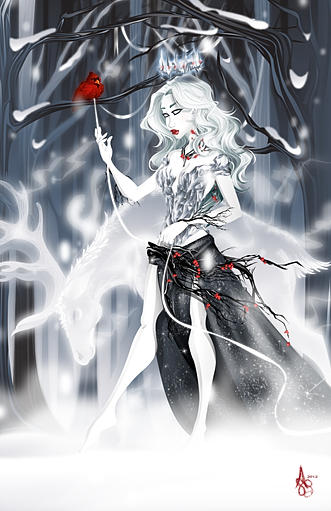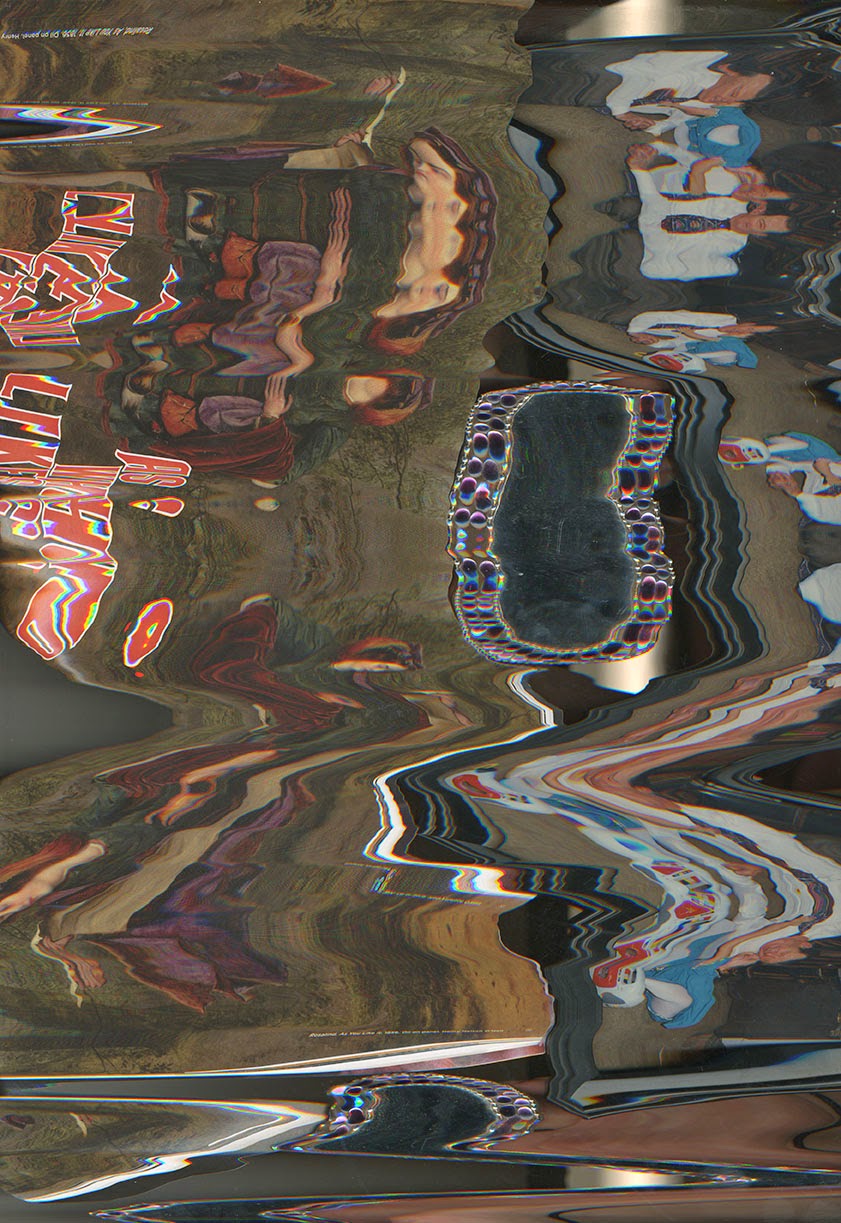The website itself was a very interesting read. While the design and layout of the site is something I'd associate with the early 2000 it is deceptive. The site had so many embedded links and pop ups that it's simplistic layout merely hides how complex the and interactive the site is. I found it slightly disconcerting however that when scrolling down and reading one column the text and images on the other side would jump around.
The passage that I focused in on was the passage on The Body. This passage used the body to not so much describe the physical changes of the human form but rather as an analysis of the changing of communication that technology has lead to. How we interact with others and technology. It brings into light how fine tuned we are into technology, going as far as to even imagine technology's call. Technology has become a part of our body. It is like a phantom limb, you feel it even when it is gone. Society today has adapted technology and given text a form of it's own that is to be leaner just as body language is learned. How big is the disconnect between online interaction and physical? I'd argue that it is smaller than it was before especially now with present culture changing their bodies and actions to promote internet and technological activity.
Tuesday, April 7, 2015
Thursday, April 2, 2015
Friday, March 13, 2015
Vector Project Update
 |
| With Original Image |
 |
| Without Original Image |
Tuesday, March 10, 2015
Asher Benson
 |
| Source |
 |
| Source |
 |
| Source |
 |
| Source |
That color is seen clearly in her work. The play of gradients the shades. All of it is a way to bring a emotion to an seemingly boring and format. Her colors bring light and emotion even when using a more subdued pallet such as the piece bellow.
 |
| Source |
Benson's artwork is amazingly detailed. Her manipulation of shading using gradients brings a great deal of depth to her images. Her layers upon layers of shading and detail to the body and it's accessories makes it so there is always something new to see when looking at once of her pieces. Despite the non-realistic style of her drawings the images still have an amazing control of anatomy and texture, whether it be jewelry or the folds of clothing. Her work takes sketching and then uses the benefits of vectors to give is more depth and detail than possible in another format.
 |
| Source |
 |
| Source |
Thursday, March 5, 2015
Illustrator Tracing
Thursday, February 19, 2015
Thursday, February 5, 2015
Ryota Matsumoto
| Ryota Matsumoto |
 |
| the Light Breath of Wind at Dawn Source |
 |
| the Indistinct Notion of an Object Trajectory Source |
Sunday, February 1, 2015
Swimming in the Memories: Class Collage
 |
| A visual ode to Grandparents long past. |
Wednesday, January 28, 2015
Scanned Images
Below are a multitude of images that I created by manipulating and moving a diverse amount of objects as they were scanned into the computer. After the images where scanned I edited the resolution of the image and file type so that they could be posted here.
Tuesday, January 27, 2015
Text Edit - Images
Ever wonder what would happen if you edited the code of an image? Well neither did I, until today, that is. Using TextEdit on a Mac I simply moved around bits of code on an image I took off of google. It yielded some interesting results. Melanie Willhide got her distortions by happy accident (theft, happy accident, same thing really). This was distortion on purpose, even if I wasn't sure exactly what I would do. Bellow is just one example:
 |
| Original Image: Link |
 |
| Edited Image |
Chasing Butterfly Pixel GIF
Monday, January 26, 2015
24 Hour Technology Log
Before posting my log I have to say keeping track of when I used any form of technology was an interesting experience. I'm glad that I have gotten over my embarrassment of how much of my life I spend on the internet and my abnormal sleep habits or it would be extremely difficult to actually publish this information. My internet time was probably cut down from normal only because the internet went down over campus for a few hours. On top of that the lack of interaction on my phone wasn't surprising considering my lack of a smart phone and distaste for talking on phones in general.
This log starts at 10am on January 25th and extended until 10am on January 26th. Please keep in mind that the time table is in military time.
SUNDAY JANUARY 25TH 2015
1000 – Start iHome Alarm
1030 – Refrigerator
1035 – Electric Teapot
1133 – Phone (Text)
1139-1144 – Browse Internet (Laptop)
1145 – Phone (Text)
1146 – Refrigerator
1200-1225 – Stove Top
1228-1237 – Watch Internet Videos (Laptop)
1300-1503 – Watch Movie (Laptop)
1330-1405 – Microsoft Word (Laptop)
1505-1610 – Read PDF(Laptop)
1525-1535 – Phone(Call)
1655-2320 – Browse Internet (Laptop)
1813-2046 – Skype (Laptop)
2225 – Printer
0115-0125 – Browse internet (Laptop)
0125-0211 – Microsoft Word (Laptop)
0215-0230 – Browse internet (Laptop)
0230-0248 – Skype (Laptop)
0250-0302 – Browse internet (Laptop)
0303 – Freezer
0304 – Refrigerator
0304 – Microwave
0305 – Toaster
0315-0400 – Browse internet (Laptop)
1000 – End iHome Alarm
Thursday, January 22, 2015
Douglas Davis
 |
| Douglas Davis Source |
Douglas Davis is most well-known for his art in the 1970s
that used the relatively new tools of video camera and satellites to break geographic
boundaries when presenting his art. This work started as early as 1971 with the
Electronic Hokkadim which was and
interactive broadcast performance from the atrium of the Corcoran Gallery,
Washington D.C.[1] But the most notable piece was in 1977 when Davis joined with
Nam June Paik and Joseph Beuys for The Last Nine Minutes? which was the first live international
satellite telecast by artists, transmitted from Documenta 6 in Kassel, Germany to twenty-five other countries.[3]
Clip From The Last Nine Minutes? Source
Davis' work continued to transform with the technology available using mediums such as the World Wide Web. The participatory project was called The World's First Collaborative Sentence that started in 1994 but continued and grew for six years.[1] In the end the piece including text from 200,000 individuals. The sentence is still available here as the Whitney Museum of American Art in New York modified the coding so that it could be compatible with the modern day websites in an attempt to continue the endeavor indefinitely.
"Television is usually considered a public medium, but because of the way it is experienced — in a personal space — it is in fact quite private. When I began to work overtly with the medium, I acted out of the same sense." -Douglas Davis[2]
Davis' work called for an active viewer as he used a medium (television) that normally called for passivity.
I believe that Davis made a remarkable start in easily accessible interactive art. Ideas such as his were the building blocks for such sites as YouTube. His work didn't start a community as much as the latter but it started a dialogue between the artist and the viewer that up until that point could only be reached by performance artists; who were hard to reach. The intimacy that Davis talks about can be viewed as even stronger than that of a in person performance artist because despite the fact that there is a screen between the view and Davis he is, in a way, closer to the view than are performance artist can manage. It is that degree of intimacy that makes his work so compelling because it not only calls for the viewer to participate but it makes them want to.
I believe that Davis made a remarkable start in easily accessible interactive art. Ideas such as his were the building blocks for such sites as YouTube. His work didn't start a community as much as the latter but it started a dialogue between the artist and the viewer that up until that point could only be reached by performance artists; who were hard to reach. The intimacy that Davis talks about can be viewed as even stronger than that of a in person performance artist because despite the fact that there is a screen between the view and Davis he is, in a way, closer to the view than are performance artist can manage. It is that degree of intimacy that makes his work so compelling because it not only calls for the viewer to participate but it makes them want to.
[1]"Douglas Davis Timeline." Timeline. Web. 21 Jan. 2015.
[2] "Douglas Davis Biography." Electronic Arts Intermix. Web. 21 Jan. 2015.
[3]Paul, Christiane. Digital Art. New York: Thames & Hudson, 2003. 18-21. Pdf.
Subscribe to:
Comments (Atom)






























